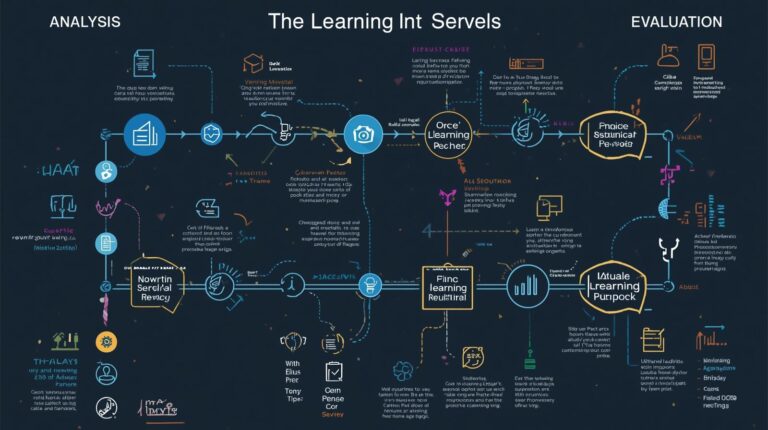Precision – Perfecting Skills Through Accuracy and Control
In the journey of adult physical learning, precision is the moment when effort meets mastery. After observation, imitation, and manipulation, learners reach a stage where the focus shifts to accuracy, consistency, and control. Precision is not simply performing a task; it’s performing it correctly, every single time. In practical terms, this means fewer errors, increased confidence, and a more professional execution of skills that matter in both personal and workplace contexts.
Understanding Precision in Adult Learning
Precision refers to the learner’s ability to execute movements with exactness. While manipulation is about controlling actions, precision takes it a step further: it demands meticulous attention to detail, careful adjustment, and refinement. Think of a chef slicing vegetables: manipulation allows the chef to hold the knife correctly and make basic cuts, but precision ensures that each slice is uniform, clean, and appropriate for the dish being prepared.
For adult learners, precision is critical because it bridges the gap between competence and excellence. It ensures that skills are not just performed, but performed well, which is essential in industries where errors can be costly or even dangerous.
Why Precision Matters
The value of precision extends across multiple dimensions:
Consistency: Precise movements produce consistent results, which is crucial in workplaces such as manufacturing, healthcare, and engineering.
Efficiency: Accurate actions reduce wasted effort, time, and resources. When learners perform tasks precisely, they optimize productivity.
Safety: In high-stakes environments, precision can prevent accidents and injuries. Correctly handling machinery, medical tools, or even office equipment reduces risk.
Professionalism: Precision signals competence and credibility. Colleagues, clients, and supervisors are more likely to trust someone who consistently executes tasks accurately.
Techniques for Developing Precision
Mastering precision requires a deliberate approach. Adult learners can adopt several strategies to refine their skills:
1. Slow Practice: Slowing down movements allows learners to notice subtle details and correct errors before they become habits. This technique is especially effective in tasks requiring fine motor control or intricate sequences.
2. Repetition with Feedback: Repetition alone isn’t enough; it must be combined with feedback. Guidance from mentors, instructors, or technology helps learners identify errors and adjust movements, gradually enhancing accuracy.
3. Focused Attention: Precision demands full mental engagement. Distractions reduce accuracy, so creating a focused practice environment is essential. Mindfulness techniques, such as deep breathing or visualization, can enhance concentration.
4. Breaking Down Complex Tasks: Complex skills can be overwhelming if attempted all at once. Breaking them into smaller, manageable steps allows learners to perfect each component before combining them.
5. Sensory Integration: Using multiple senses—sight, touch, hearing—can reinforce precision. For example, feeling the resistance of a tool, listening to auditory cues, or visually checking alignment improves accuracy.
Real-World Applications of Precision
Precision is a skill that translates directly into everyday life and professional performance:
Healthcare: Surgeons, nurses, and physiotherapists rely on precise movements to ensure patient safety and effective treatment. A small deviation can have serious consequences.
Manufacturing and Engineering: Precision in assembling components or operating machinery ensures quality and reduces defects. Skilled workers who can consistently achieve exact specifications are highly valued.
Arts and Crafts: Musicians, painters, and designers benefit immensely from precision, as the quality of their work depends on accuracy and consistency.
Sports and Fitness: Athletes use precision to optimize performance, whether it’s a golfer’s swing, a gymnast’s landing, or a swimmer’s stroke. Accuracy leads to better results and reduces the risk of injury.
Overcoming Challenges in Achieving Precision
Adult learners often face hurdles on the path to precision:
Perfectionism: While precision is important, seeking perfection can lead to frustration. Emphasizing improvement over flawlessness keeps learners motivated.
Fatigue: Physical and mental fatigue can compromise accuracy. Scheduling practice sessions at optimal times and taking regular breaks enhances performance.
Inconsistent Feedback: Without proper guidance, learners may reinforce incorrect techniques. Consistent, actionable feedback is essential for refining skills.
Complexity of Tasks: Multi-step tasks can overwhelm learners. Focusing on one element at a time and gradually integrating components reduces errors and builds confidence.
Measuring and Reinforcing Precision
To track progress in precision, learners and instructors can use a combination of methods:
Observation: Carefully watching movements for accuracy and adherence to standards.
Metrics and Checklists: Using defined criteria to evaluate performance ensures that improvements are measurable.
Video Review: Recording and reviewing actions allows learners to identify subtle errors they might not feel or see in real-time.
Peer Feedback: Collaborating with peers provides fresh perspectives and highlights areas for refinement.
Reinforcement comes from celebrating small successes, gradually increasing complexity, and encouraging learners to reflect on their improvements. This iterative process ensures that precision becomes habitual, forming the foundation for advanced psychomotor skills.
Precision in the Broader Psychomotor Context
In Bloom’s psychomotor domain, precision is the natural progression from manipulation. Once learners can control movements effectively, they focus on fine-tuning them, preparing for articulation—where multiple skills are coordinated seamlessly—and ultimately naturalization, where actions become second nature.
The focus on precision also strengthens the integration of cognitive and affective domains. Adult learners not only improve physical execution but also enhance decision-making, problem-solving, and emotional regulation. Accurate actions reduce anxiety and increase confidence, creating a positive feedback loop that reinforces continued learning.
Conclusion
Precision is a critical milestone in adult physical learning. It transforms basic competence into high-quality performance, ensuring that tasks are executed accurately, consistently, and confidently. By practicing deliberately, incorporating feedback, and maintaining focus, adult learners can refine their skills, prevent errors, and prepare for more complex tasks.
Whether in the workplace, sports, arts, or daily life, mastering precision allows individuals to perform at their best, ensuring safety, efficiency, and professionalism. In the psychomotor journey, precision is the key to moving from capability to excellence, laying the groundwork for articulation, naturalization, and long-term skill mastery.



